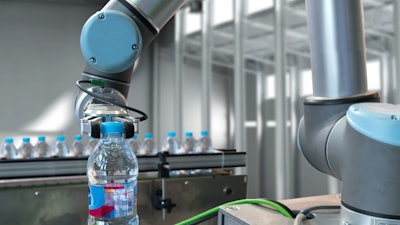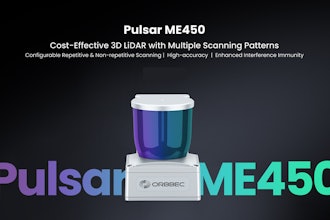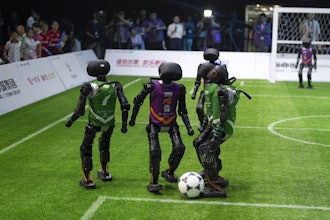
A pioneer in the move to automate routine production line tasks, the manufacturing sector is again leading the way as it increasingly adopts robotic process automation (RPA) to improve both back-office operations and production floor activities. This includes everything from order processing and fulfillment to inventory, transportation management, and customer support.
Properly executed, RPA is capable of automating a host of repetitive, rules-based processes, minimizing the amount of time spent on manual tasks (and the potential for human error) while simultaneously improving productivity, driving innovation, and lowering costs.
But after a year marked by a worldwide pandemic that helped to spur unprecedented growth in the adaptation and use of RPA, manufacturers are now struggling to scale their automation initiatives, due in large part to the huge burden of maintaining the automations they have built to date. While there was great hope that artificial intelligence in concert with RPA would yield higher-quality, higher-value automations, this has failed to materialize as most of the tools in that area simply aren’t ready for prime-time.
Beyond this lack of maturity in the marketplace, many manufacturers are coming to the realization that the RPA vendor originally chosen to handle their implementation may simply not be the best option for meeting their new, larger-scale needs. Unfortunately, switching RPA platforms has proven to be both expensive and difficult to execute to date due to a lack of code parity, lost credentials, absent versioning, unavailable output compare, missing audit logs, and numerous other challenges.
While the burden of switching vendors will cause at least some manufacturers to hesitate, 2021 is likely to see a large number of competitive account migrations as more and more companies abandon their current RPA vendors for alternative providers that offer them a better chance to realize the benefits originally promised by RPA. This shift will produce an inevitable swing from best-of-breed capabilities to consolidated platforms, just as it does in every segment of IT tools.
With more manufacturers indicating their willingness to drop current RPA providers for alternative sources who actually might be able to deliver on the promises they make, look for both M&A and IPO activity in the RPA market to gain steam and continue well into 2023. This ultimately will lead to better coverage along the RPA toolchain, addressing key components like process mining/discovery, design, and orchestration consolidated into one tool.
Longer term, the burden of RPA maintenance and support will lead to more manufacturers establishing RPA best practices and creating in-house centers of excellence. The increased growth and popularity of these centers will result in a significant move to standardize and better govern RPA in order to minimize bot errors, maintenance, and the business value lost when bots are taken out of production.
It will also lead to better alignment with the manufacturer’s IT team to establish greater shared automation ownership. IT will contribute technical expertise on the limitations of automation and the intricacies of sound RPA development and delivery, as well as the need to assure privacy, security, and full integration with complementary technologies.
Finally, manufacturers will continue experimenting with artificial intelligence in 2021, while still not completely embracing it. While some manufacturers will look to capitalize on intelligent automation to automate processes end-to-end and continue pushing the boundaries of RPA, blanket implementation of AI seems unlikely to occur as companies focus more on getting their RPA functioning with increased stability and fewer errors.
With that in mind, manufacturers will focus more on maximizing RPA uptime and bot availability in the short-term in order to capture more of the expected business value from their automations. Industry experts predict this metric will be front and center on automation teams' analytics dashboards and reporting briefs in 2021.
As RPA technology improves, though, manufacturers’ RPA portfolios are likely to see a formidable rise in growth capacity, gradually accounting for a larger portion of new spending. This will come primarily in the form of new and updated licenses and larger core capacities to handle the higher loads of traffic and processing requirements.
Hyperautomation, which harnesses the power of AI, RPA, and machine learning, is particularly well-positioned to become widely used across large-scale manufacturing enterprises. Designed to process massive volumes of data end-to-end, hyperautomation will enable manufacturers to automate the integration, DevOps, monitoring, and management processes compartmentalized by traditional RPA into a single process, boosting efficiency and productivity on a larger scale than ever before.
With Gartner predicting RPA spending will top $1.5 billion in 2021, it is no longer a question of whether manufacturers will get on board with RPA, but how quickly they will move to address current issues so that they can take full advantage of the benefits it offers and move to more advanced applications.
Tony Higgins is CTO at Blueprint Software Systems, a global software company and leading provider of digital process design and management solutions. For more information, visit https://www.blueprintsys.com/company




















